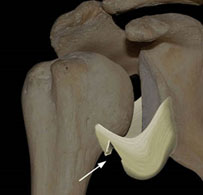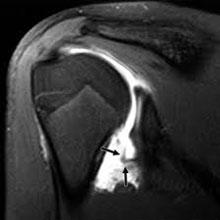Humeral Avulsion of the Glenohumeral Ligaments (HAGL) Repair
Dr. Garcia demonstrates his technique for arthroscopic HAGL repair.

Background:
After you dislocate your shoulder you can pull off the ligaments attached to the humerus of the shoulder call a HAGL lesion (Humeral Avulsion of the Glenohumeral Ligaments). HAGL lesions are much less common than standard labral tears. In patients with continued dislocations and a known HAGL lesion, surgery is usually recommended. Some HAGL lesions can heal on their own but if they don’t surgery is usually indicated. HAGL lesions are a challenge to treat as they are frequently missed on MRI and even if discovered many orthopedic surgeons have limited experience with fixing these injuries. Most surgeon fix HAGL lesions with open surgery but Dr. Garcia has extensive experience performing these repairs arthroscopically with good outcomes.

Potential Risks of Surgery:
- Injury to nerves mainly the axillary nerve which sits below the capsule
- Reinjury or recurrent instability
- Continued pain
- Stiffness
Surgery:
This surgery is performed as an outpatient procedure. Usually it involved general anesthesia and a nerve block. Dr. Garcia repairs your HAGL lesion through small arthroscopic portal incisions. He places anchors in the humerus and repairs the torn issues back with sutures. After completing the repair, the torn glenohumeral ligament retains its tension and can support the shoulder. After this Dr. Garcia will evaluate for any labral tears and fix these as well to further reduce your shoulder instability.
Video testimonial after chronic HAGL repair for shoulder instability
Physical Therapy and Outcomes:
This is a challenging surgery but outcomes are good if these lesions are caught soon enough and repaired. Success rates can be up to 90% in acute cases and mid 80% in chronic cases with no further instability. Physical therapy consists of a sling for 6 weeks and return to sport around 4 to 6 months. For further information visit Dr. Garcia’s section on Post Op Shoulder Protocols.


















